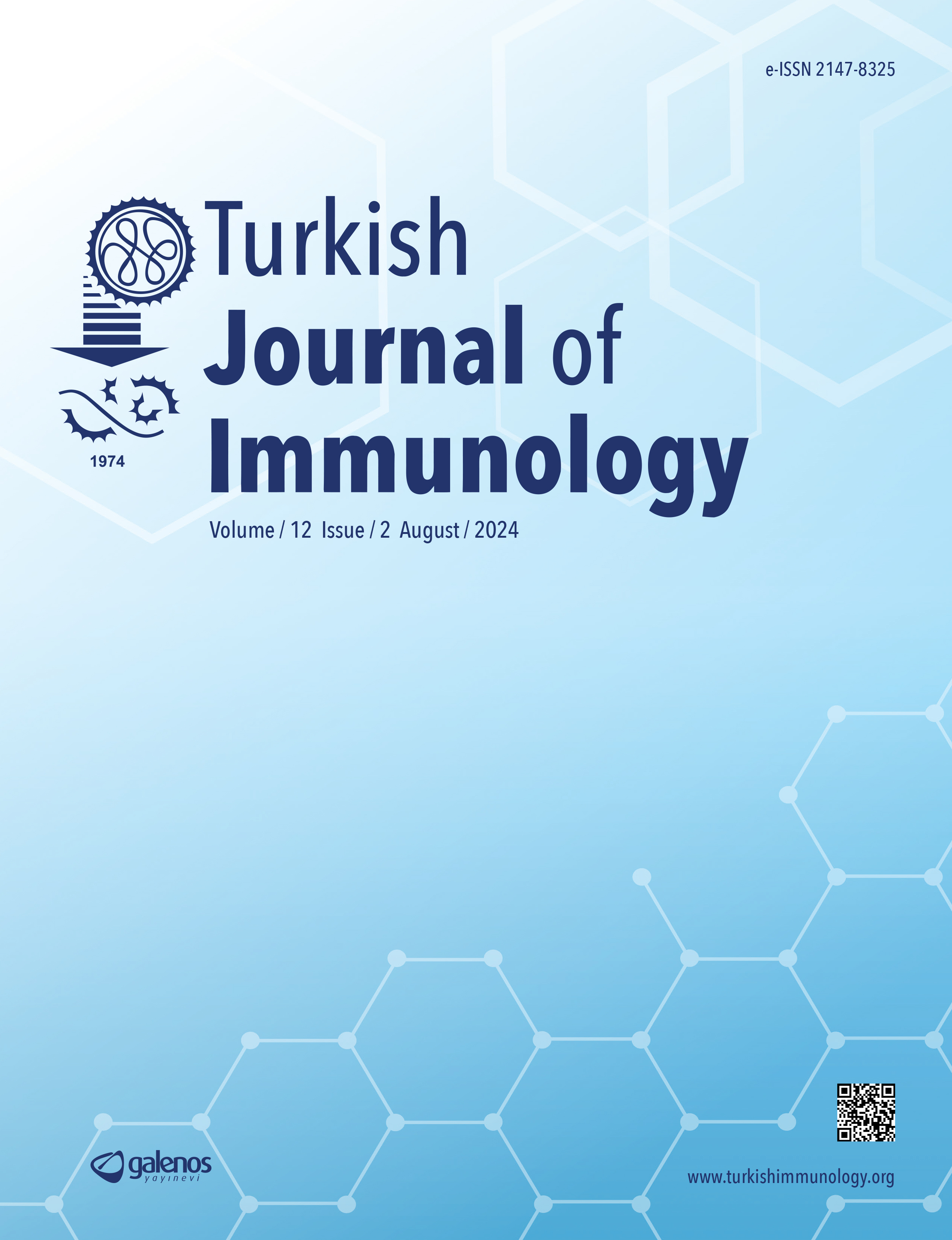Index








Applications



Membership



Volume: 4 Issue: 1 - 2016
| ORIGINAL RESEARCH | |
| 1. | Accurate and Simple Interpretation of HLA B27 Screening by Flow Cytometry Gülderen Yanıkkaya Demirel, Ömer Güzel doi: 10.5606/tji.2016.459 Pages 1 - 6 Objectives: This study aims to compare the results of the human leukocyte antigen (HLA) B27 screenings by flow cytometry with results obtained by the sequence-specific primer-polymerase chain reaction (SSP-PCR) HLA B27 analysis. Patients and methods: B etween J anuary 0 1st, 2008 and December 31st, 2008, the flow cytometry screening results of HLA B27 analysis for 486 samples were retrospectively analyzed. The results were compared with those obtained by the SSP-PCR for the diagnostic accuracy. Results: The sensitivity of HLA B27 screening test by flow cytometry was 99% while the specificity was 100%. For our study population, while positive predictive value was 0.99 for HLA B27 screening for cytometry; negative predictive value was 1. HLA B7 positivity is detected in 0.8% of all patients. Conclusion: Our study results suggest that accurate flow cytometric screening test for HLA B27 is a reliable screening test with high specificity and sensitivity and can be safely used by the clinicians. |
| 2. | Assessment of Plasma Soluble Human Leukocyte Antigen-G as a Prognostic Marker in Post-Chemotherapy Breast Cancer Patients in Gaza Strip Mansour Elyazji, Maged Yassin, Bertta Khattab doi: 10.5606/tji.2016.460 Pages 7 - 13 Objectives: This study aims to investigate whether plasma soluble human leukocyte antigen-G (sHLA-G) can be used as a potential biomarker for the diagnosis and follow-up of breast cancer in post-chemotherapy patients in Gaza strip. Patients and methods: The study population was divided into two groups: 60 women with breast cancer and receiving chemotherapy (post- group) and 60 women with breast cancer who did not receive chemotherapy (pre- group). The control group consisted of 60 healthy women. Cancer antigen 15-3 (CA15-3) and carcinoembryonic antigen (CEA) levels were analyzed using the Axsym Immunoassay system. Results: Plasma sHLA-G levels were significantly higher in breast cancer patients compared to healthy controls (p<0.001). Area under receiver operating characteristic (ROC) curve of sHLA-G for discriminating patients with breast cancer (n=120) from the control group (n=60) was 0.919 (95% CI=0.882 - 0.956) and was smaller than those of CA15-3 (0.998, 95% CI=0.996-1.00) and CEA (0.985, 95% CI=0.973-0.997). The ROC curves of sHLA-G, CEA, and CA15-3 for differentiating the group of patient who did not receive chemotherapy yet (n=60) and the group of patient who received anti-cancer treatment (n=60) were 0.998, 0.781 and 0.698, respectively (p<0.001). Conclusion: Our study findings provide evidence in further support for the application of sHLA-G as a biomarker for diagnosis, prognosis, and follow-up of breast cancer therapy. |
| 3. | Human Leukocyte Antigen Class I-II Allele Frequencies and Association Between Human Leukocyte Antigen Alleles and ABO Blood Group Antigens Mustafa Soyöz, Burcu Akman, İsmail Totur, Sinem Topçu, Aslı Özkızılcık Koçyiğit, Burcu Çerçi Gürbüz, Ceren Yüksel, Toprak Hamdi Güngör, Ayşe Memon, Derya Rasime Güleç, Murat Kılıçoğlu, Tülay Kılıçaslan Ayna, Ibrahim Pirim doi: 10.5606/tji.2016.464 Pages 14 - 18 Objectives: This study aims to investigate human leukocyte antigen (HLA) allele frequencies of healthy individuals and to determine whether there is an association between the HLA alleles and ABO blood groups. Materials and methods: The HLA-A, HLA-B and HLA-DRB1 allele frequency were evaluated in a sample of 450 unrelated individuals at Izmir Tepecik Education and Research Hospital Tissue Typing Laboratory archives. The HLA genotypes of individuals were analyzed by using single-specific primer-polymerase chain reaction (PCR-SSP) or PCR using sequence-specific oligonucleotide (PCR-SSO) methods. Blood groups were evaluated by using microplate agglutination method. Results: The most common alleles were HLA-A*02, HLA-B*35, and HLA-DRB1*11 in each locus. A and O blood groups were most common, respectively. A statistically significant association between HLA and ABO blood groups was found in HLA-B and HLA-DRB1 loci. Conclusion: Our study results confirm the other study findings in the Turkish population and also contribute an additional data for further HLA polymorphisms and anthropological studies. We believe that gaining a better understanding on the HLA allele frequencies would help to constitute national transplantation strategies. |




